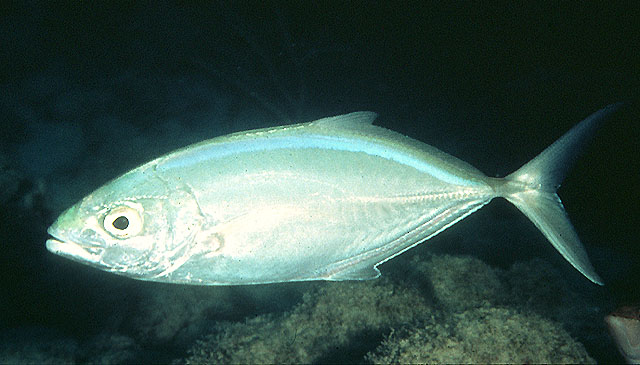| Carangidae (Jacks and pompanos), subfamily: Caranginae |
| 73 cm FL (male/unsexed); max.weight: 8,200.0 g |
|
reef-associated; marine; depth range 0 - 35 m, oceanodromous |
| Western Atlantic: New Jersey (USA), Bermuda, and Gulf of Mexico to southern Brazil; throughout the Caribbean Sea (Ref. 9626). Most common in the West Indies (Ref. 26938). |
|
Dorsal spines (total): 8-9; Dorsal soft rays (total): 26-30; Anal spines: 2-3; Anal soft rays: 23-26 |
| Common in clear insular areas or in coral reefs off mainland coasts (Ref. 5217). Juveniles frequent areas with algae (e.g. Sargassum) (Ref. 26235). Usually in schools which may be spawning groups; occasionally solitary. Feeds on fishes, shrimps and other invertebrates. Marketed fresh (Ref. 56217). Easily approached (Ref. 9710). Large individuals have caused ciguatera when eaten (Ref. 13442). |
|
Least Concern (LC); Date assessed: 20 August 2012 Ref. (130435)
|
| reports of ciguatera poisoning |
Source and more info: www.fishbase.org. For personal, classroom, and other internal use only. Not for publication.
